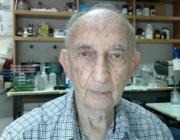Abstract:
GENERAL INTRODUCTION. The invasion of the tissues of a host by pathogenic microorganisms is usually followed by a series of sequential humoral and cellular events which include: the generation of chemotactic agents, the directional migration of leukocytes toward the invader, the opsonization of the agents by immunoglobulins and complement components, the intemalization of the agents within phagolysosomes. and eventually by the killing and biodegradation of the ingested agents. The perturbation of the leukocytes membranes by opsonized micro- organisms as well as by a variety of cytolytic agents generated by bacteria is also accompanied by a series of biochemical events which include an “oxygen burst" which culminates in the generation of oxygen radicals, some of which are directly involved in the killing of the ingested agents. Concomitantly with the activation of the oxygen metabolism, granulocytes (PMN)f and macrophages (MQ)f also generate chemiluminescence (CL) which is believed to be a natural consequence of the redox met mbrane perturbation due to phagocytosis. lt may involve the generation of a species of singlet oxygen and hydroxyl radicals or electronically excited carbonyl groups which relax with light emission. A relationship between CL and superoxide production has also been demonstrated by the reduction of CL which occurs following the addition of superoxide dismutase (SOD) to phagocytizing leukocytes. The CL signals which can be further amplified by luminol are also believed to be dependent upon myeloperoxidase (MPO)-catalyzed reactions and/or upon metabolism of arachidonic acid pathway(s). The luminol-de-pendent CL ( LDCL) reaction is currently employed to assess the opsonophagocytic properties of sera as we as for the evaluation of the membrane perturbation which is initiated, in leukocytes, by cytotoxic drugs, and by microbial toxins. ln addition to opsonized particles, a series of soluble ligands, i.e., chemotactic peptides, lectins, phorbol esters, calcium ionopohres, polyanethole sulfonate, and cationic polypeptides have all been shown to stimulate the oxygen burst and to generate CL in neutrophils, monocytes, and macrophages. Because of the relative ease and rapidity with which CL is measured in leukocytes, this method has also become a powerful tool to investigate host-and-parasite interrelationships and to assess defects in leukocyte functions (e.g. , chronic granulomatous disease of childhood (CGD) MPO deficiency, defects in complement components and in immunoglobulins, etc.). Recent studies from our laboratory have described a unique phenomenon which showed that a variety of microbial species can be very effectively “opsonized” by cationic proteins rich in arginine (e.g., histones. poly-L-arginine - PARG). Such opsonized microorganisms are readily internalized not only by "professional" phagocytes (PMNs and macrophages) but also by epithelial cells and by fibroblasts. We have postulated that perturbation of the mammalian cells by the highly-charged polyelectrolytes, coated upon particles, delivers a signal (through electrostatic interactions) to the cytoskeleton resulting in the invagination of the membrane and the formation of a phagocytic vacuole. This phenomenon mimics the cellular events that take place following the stimulation of the leukocyte membrane by antibody and complement-coated particles which function through the F and Cb receptors. Thus, the polycationic ligands may represent "archaic" antibodies capable of stimulating certain membrane sites probably nonspecifically (see Section A.l). Our studies further postulated that if leukocytes “recognize" cationic charges upon particles and respond to them by phagocytosis, such coated particles should also be able to trigger an “oxygen burst" in a fashion similar to that induced either by antibody-coated particles or by other membrane- active agents. Indeed, we have demonstrated tnat very intense LDCL and superoxide production ls triggered in blood leukocytes following stimulation with bacteria and zymosan particles which had been precoated with arginine rich histon PARG and paradoxically also by the anionic polyelectrolytes,.|iquoid. anddextransulfatc. The intensity of the CL signals obtained exceeded by many magnitudes those induced by antibody-coated particles. These findings further suggested that the stimulation of the leukocyte membrane, either simultaneously or sequentially by mixtures of different ligands, each recognizing a different membrane site, may perhaps culminate in a synergistic metabolic response. Such "multiple hits" may therefore generate large quantities of oxygen radicals and CL, presumably due to a more efficient activation of the membrane oxidase and a better assembly of the electron transport system leading to the generation of superoxide. We have chosen to examine agents like the chemotactic peptide F-Met-Leu-Phe (FMLP), a variety of lectins, calcium ionophore, PMA, liquoid, and poly ot-cationic peptides as probes for the stimulation of LDCL and superoxide production by human PMN. We have shown that whereas each ligand alone induced only a very moderate LDCL response in leukocytes, very intense CL signals were generated if the various ligands were employed as “cocktails, suggesting multiple mechanisms of activation of the oxygen metabolism in leukocytes (see also Reference 27). Since inflammatory exudates which accumulate following microbial proliferation in tissues are known to be rich in both cationic and anionic polyelectrolytes, we also postulated that some of these agents may coat either the surface of the leukocytes or the surface of the microorganisms, or both. and thus modulate mutual recognitions leading either to enhanced or depressed membrane perturbation. These changes may be monitored by CL and by the production of superoxide. The present report further expands our observations on the multiple roles played by polycationic and polyanionic agents and of "cocktails" of soluble ligands in the stimulation of the generation of LDCL and superoxide by human blood luekocytes and by mosue peritoneal macrophages, with an emphasis on the luekocyte-bacteria interactions in inflammation.
